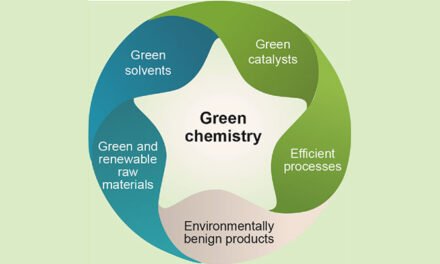The chemical industry faces significant global supply chain complexities due to its reliance on diverse raw materials, geographical distribution, regulatory variations, and volatile market conditions. To address these challenges, companies in the chemical industry adopt several strategies to ensure resilience, efficiency, and adaptability. Here are key approaches:
1. Diversification of Suppliers
- Multi-Sourcing: To mitigate risks from supply disruptions (e.g., natural disasters, geopolitical instability, or pandemics), chemical companies often source raw materials from multiple suppliers across different regions. This helps reduce reliance on a single source and ensures the continuity of supply even if one supply chain is disrupted.
- Geographical Diversification: Companies expand their supplier base across different countries or continents, ensuring they aren’t overly dependent on a single region, especially in cases of local supply chain disruptions.
2. Localization of Production
- Regional Manufacturing Plants: To reduce transportation costs, minimize supply chain risks, and meet regional demand, many chemical companies establish manufacturing facilities in key markets. Local production also helps companies comply with regional regulations and meet local preferences.
- Nearshoring: In addition to traditional outsourcing, some companies are shifting to nearshoring, moving production closer to their home markets to reduce shipping time, costs, and risks associated with distant global supply chains.
3. Advanced Forecasting and Demand Planning
- Predictive Analytics: By using big data, artificial intelligence (AI), and machine learning (ML) tools, chemical companies can better predict demand patterns, raw material shortages, and potential supply chain bottlenecks. These insights allow for more accurate production planning and inventory management.
- Real-Time Monitoring: Leveraging IoT sensors and other real-time tracking technologies, companies monitor inventory levels, supply chain status, and transportation conditions to make adjustments on the fly, improving responsiveness.
4. Supply Chain Transparency and Collaboration
- End-to-End Visibility: Chemical companies implement digital platforms that provide full visibility into the supply chain, from raw material sourcing to product delivery. This helps identify risks early, track shipments, and ensure compliance with regulations.
- Collaboration with Suppliers and Customers: Strong collaboration between chemical companies, suppliers, and customers can help synchronize production schedules, forecast demand more accurately, and ensure that supply chain disruptions are managed collectively. Sharing information and aligning strategies helps optimize the entire supply chain.
5. Inventory and Stock Management
- Just-in-Case Inventory: Given the risks of supply chain disruptions, some chemical companies maintain higher levels of inventory or buffer stock of critical materials, ensuring they can continue production even when supply chains are temporarily interrupted.
- Lean Inventory and Just-in-Time: On the flip side, many chemical companies focus on lean inventory systems, relying on just-in-time (JIT) delivery models to reduce storage costs. However, JIT systems are used cautiously in the industry, as disruptions can quickly halt production if materials aren’t available when needed.
6. Strategic Stockpiling and Safety Stocks
- Critical Materials and Raw Materials: For essential raw materials (like oil, natural gas, and specialty chemicals), chemical companies may stockpile essential supplies or maintain safety stocks to avoid shortages. These stocks are particularly important for materials that are difficult to procure or subject to price volatility.
- Raw Material Hedging: Some companies use financial instruments to hedge against volatile commodity prices (e.g., crude oil or natural gas), allowing them to manage cost fluctuations and avoid disruptions.
7. Agility and Flexibility in Production
- Flexible Manufacturing Systems: Companies often invest in flexible production systems that can be easily adapted to shifts in demand or raw material availability. This enables them to reconfigure production lines quickly in response to supply disruptions.
- Modular Manufacturing: Modular plants or scalable production lines allow for rapid changes in production capacity, making it easier to handle fluctuations in demand or material shortages.
8. Technology Integration and Automation
- Supply Chain Software: Chemical companies utilize advanced software for supply chain management, including Enterprise Resource Planning (ERP) and Transportation Management Systems (TMS), to streamline operations, track shipments, and optimize logistics.
- Automation and Robotics: Automation in warehouses, packaging, and logistics operations helps speed up processes, reduce human error, and improve overall efficiency. Robotics and AI assist in managing repetitive tasks, and the integration of autonomous vehicles helps optimize deliveries.
9. Risk Management and Contingency Planning
- Scenario Planning: Chemical companies conduct detailed scenario planning to anticipate potential risks such as geopolitical instability, natural disasters, or pandemics. This includes developing contingency plans for alternative supply sources and production routes.
- Risk Mitigation Strategies: Companies employ risk mitigation measures such as geographic diversification, multi-modal transportation, and investments in insurance to reduce the financial impact of disruptions.
10. Sustainability and Compliance
- Environmental and Regulatory Compliance: The chemical industry must adhere to strict global regulations (e.g., REACH in Europe, TSCA in the U.S.) and environmental standards. Companies ensure that their supply chains comply with these regulations, which may include restrictions on raw materials, emissions, or waste.
- Sustainable Sourcing: As sustainability becomes more important, chemical companies are sourcing raw materials that meet environmental standards, focusing on ethically sourced materials, and reducing the environmental impact of logistics and transportation.

















